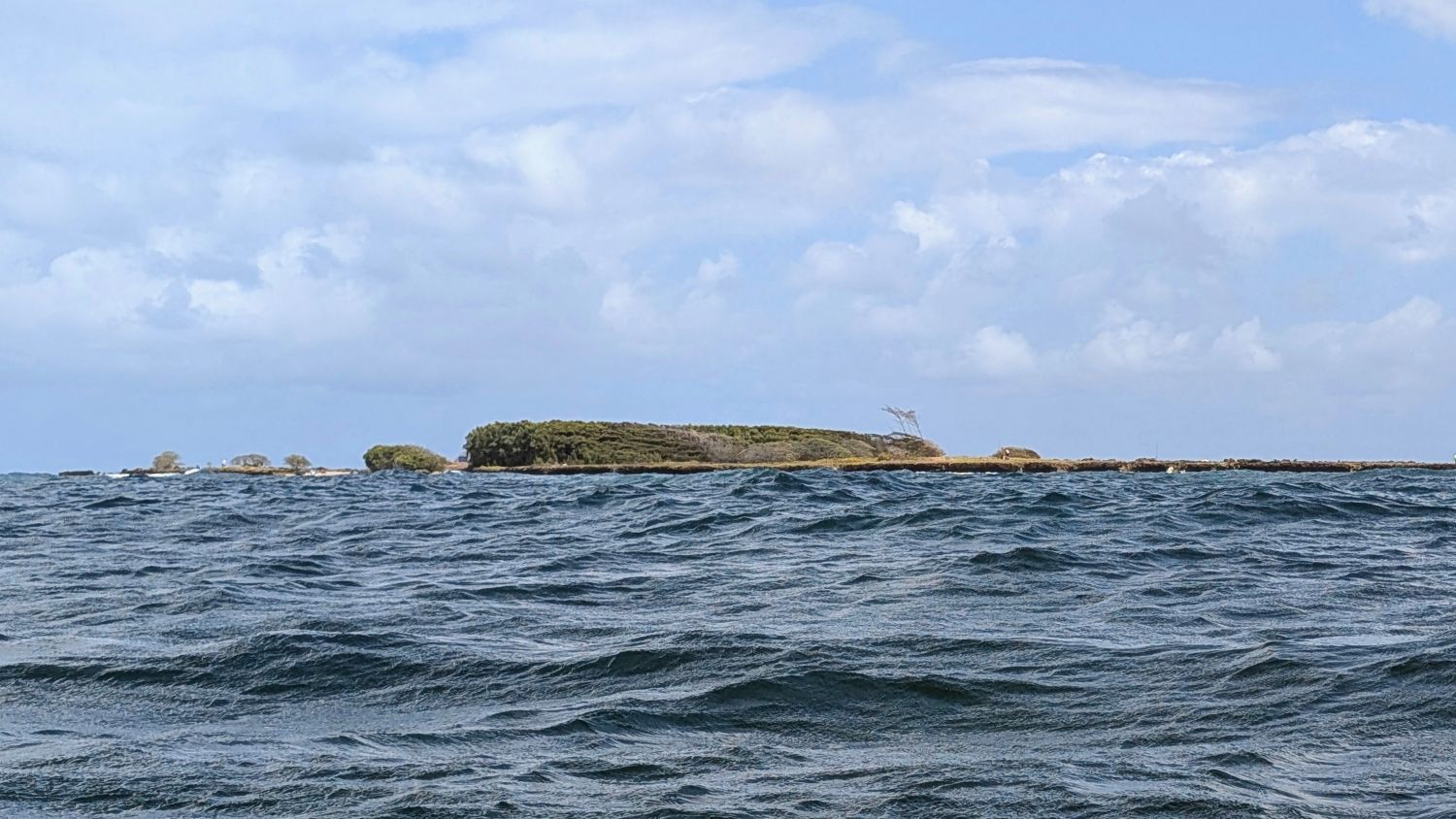Story and photos (except as noted) by Susan Wilcox
August 24, 2025
What paddler hasn’t gazed longingly at the many small islands surrounding the major islands and thought, “I’d love to paddle there — that route needs a kayak on it!”?
The smart paddler, however, knows not to make this trip without some local knowledge of the reef, the winds, the breaks and the currents. It’s what you don’t know that can get you into trouble. So, when the club announced a paddle to Kapapa Island, a bird sanctuary 2.5 miles offshore via Kāneʻohe Bay, I was all in!
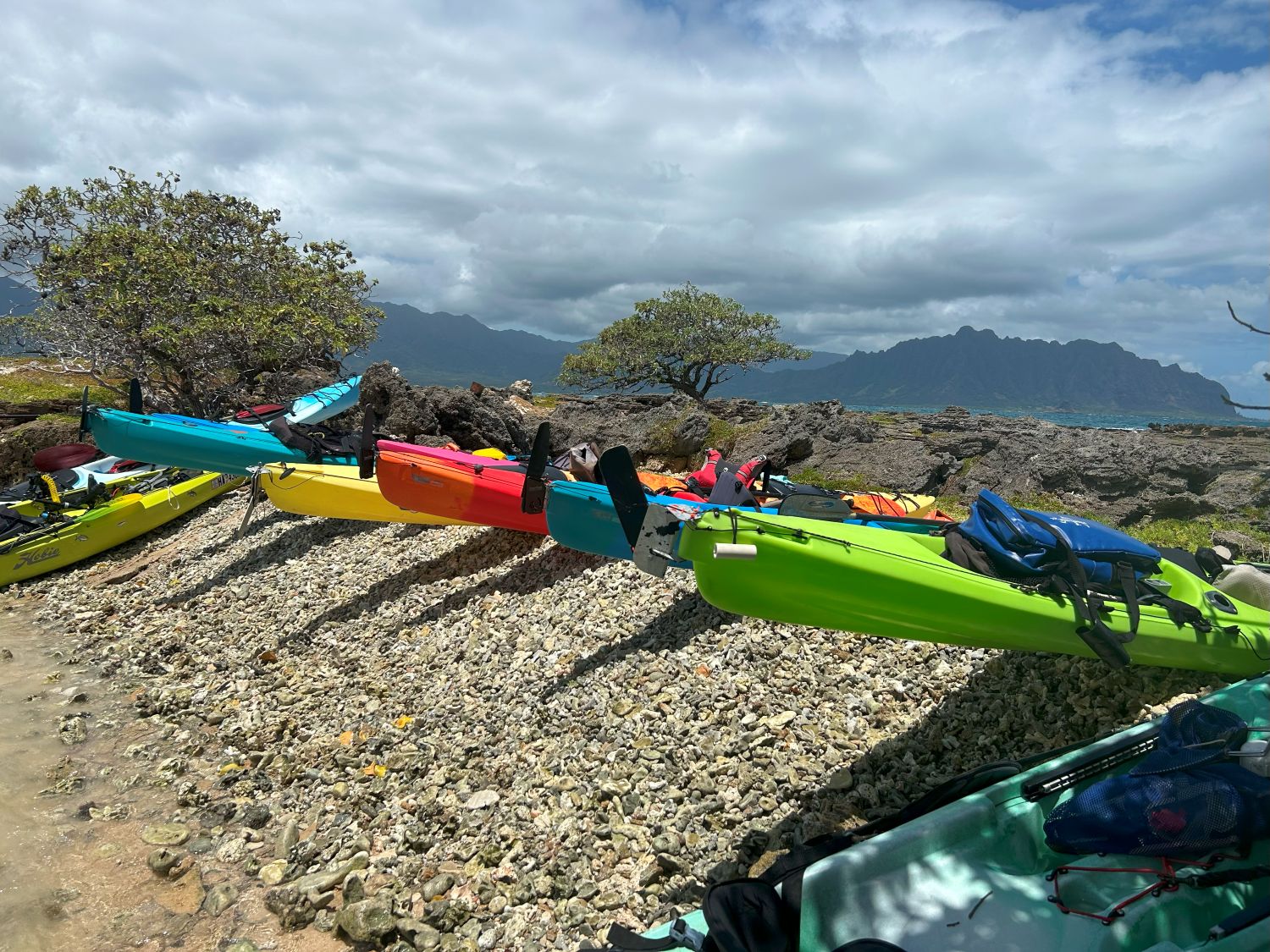
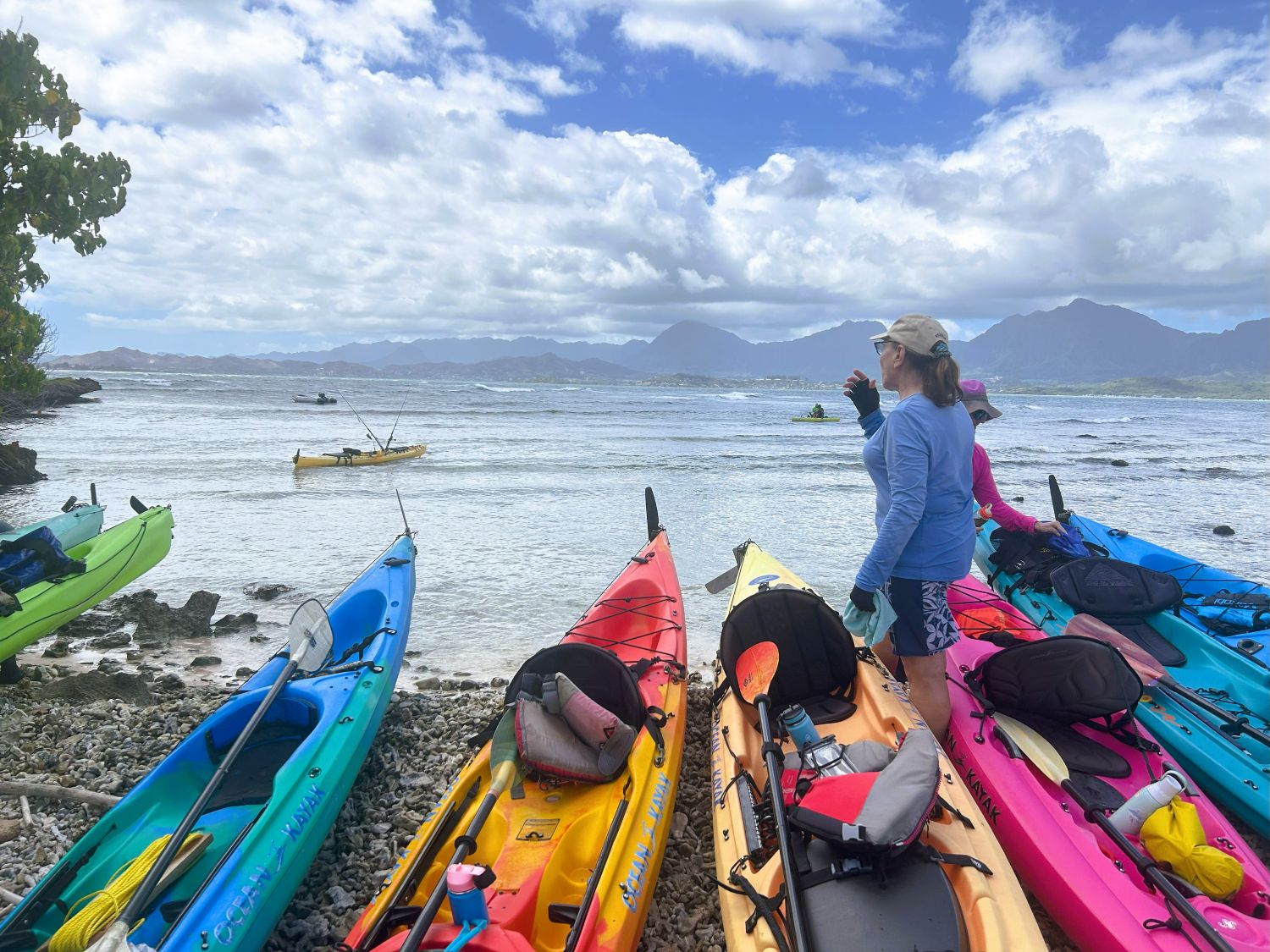
Twelve of us gathered at the Canoe Hale at Heʻeia Kea Boat Harbor on Sunday, August 24. As Eileen, one of the leaders for this paddle, described the route and conditions, I gulped a little. I expected there to be some wind (when is there not?), but waves were clearly breaking at the island. Eileen said the swell was maybe 2 feet and I pictured a wall that could be three feet, not big by Hawaiian standards, but my Venus 11 had not yet been surf-tested in any kind of break. Knowing how powerful Hawaiian waves can be, how would I do in that?
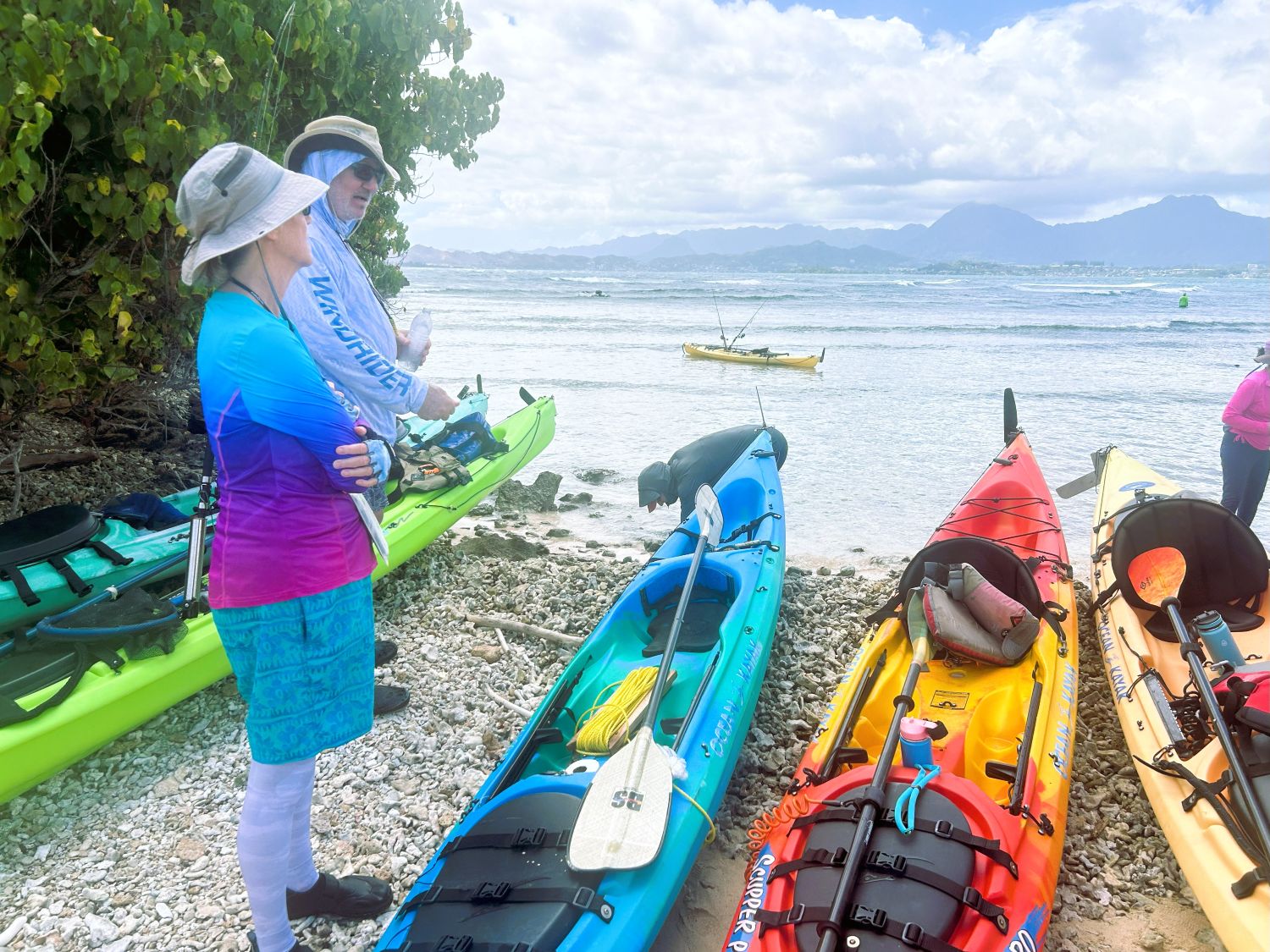
We headed toward the island under a partly cloudy sky with 12-15 knot winds, gusts higher, and a rising tide. The route took us over the sandbar (Ahu o Laka), which is always a pleasure, and the water was high enough so that most of us were able to paddle over it, although a few hopped out to walk their kayaks across it.
I’m not a fan of paddling where I can’t see the bottom, because it seems like I am working hard and getting nowhere. Much of this paddle, however, was over reef, and I have an ongoing enjoyment of dipping my paddle in the water, pushing forward, and seeing the coral and reef life pass beneath me. It doesn’t get any better than that.
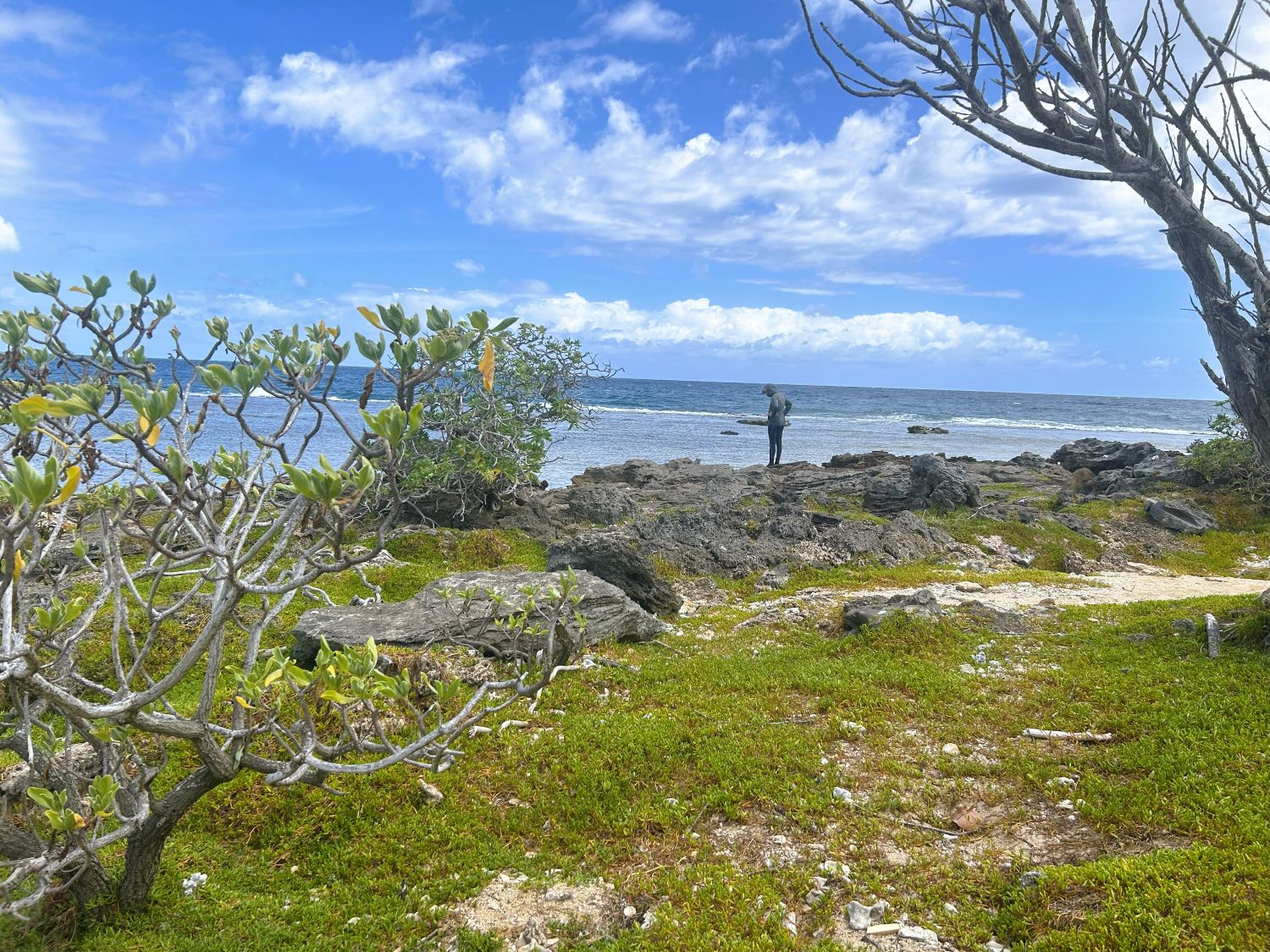
The wind picked up as we approached the island. My focus was on staying on course (no rudder) and musing about how I hate wind, when suddenly I felt a sting on my right arm and then my left. My paddle had picked up a Portuguese Man of War and it had wrapped a tentacle around my right arm and then been tossed onto the left. I swished the paddle through the water to get it off, but a tentacle was stuck to the Velcro of my glove. I managed to pick it off and rid myself of the pest, but “Auwe!” Those stings hurt! (Side note: the irony here is that a month earlier, I had declined to go into the water at the Crash and Burn clinic because signs were posted that Portuguese Man of War were in the water. I had been stung before and wanted no part of it. Now I had surf and the sting! The ocean will have its way with you.)
The sting was a welcome (?) distraction as I approached the surf. Eileen, knowing I was nervous, gave clear instructions plus the reassurance that no matter what it looked like (which was not as bad as I had feared) the waves were low energy. I wisely put my trust in her and the other club members and followed instructions. It was fun! Plus, I discovered that my kayak does just fine in surf, if I don’t do anything stupid.
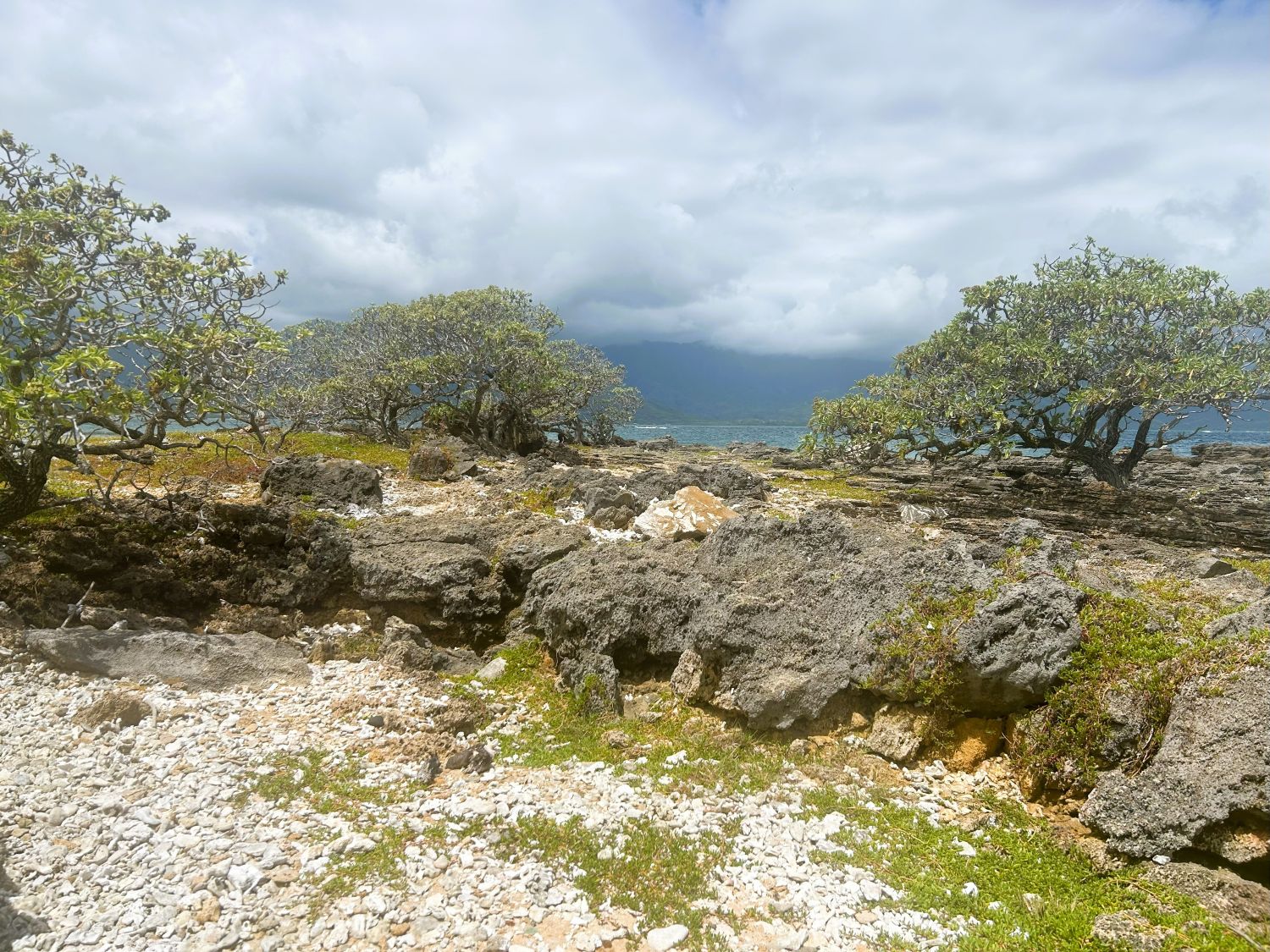
We landed on a beach made up of shells and broken coral. Kapapa is a 9.5 acre islet just outside the reef in Kāneʻohe Bay. It is what geologists call “calcareous,” composed of reef and shells, rising to 14 feet above sea level. Stan calls it “magical” and he’s not wrong.
Its primary reputation is as a nesting site for seabirds, mainly shearwaters and petrel. It was first protected in 1917 and was designated as a seabird sanctuary by DLNR in 2010. The island also has historical and cultural significance, as many artifacts have been found, including evidence of a heiau, canoe house and fishing shrine. It is listed in the U.S. National Register of Historic Places.
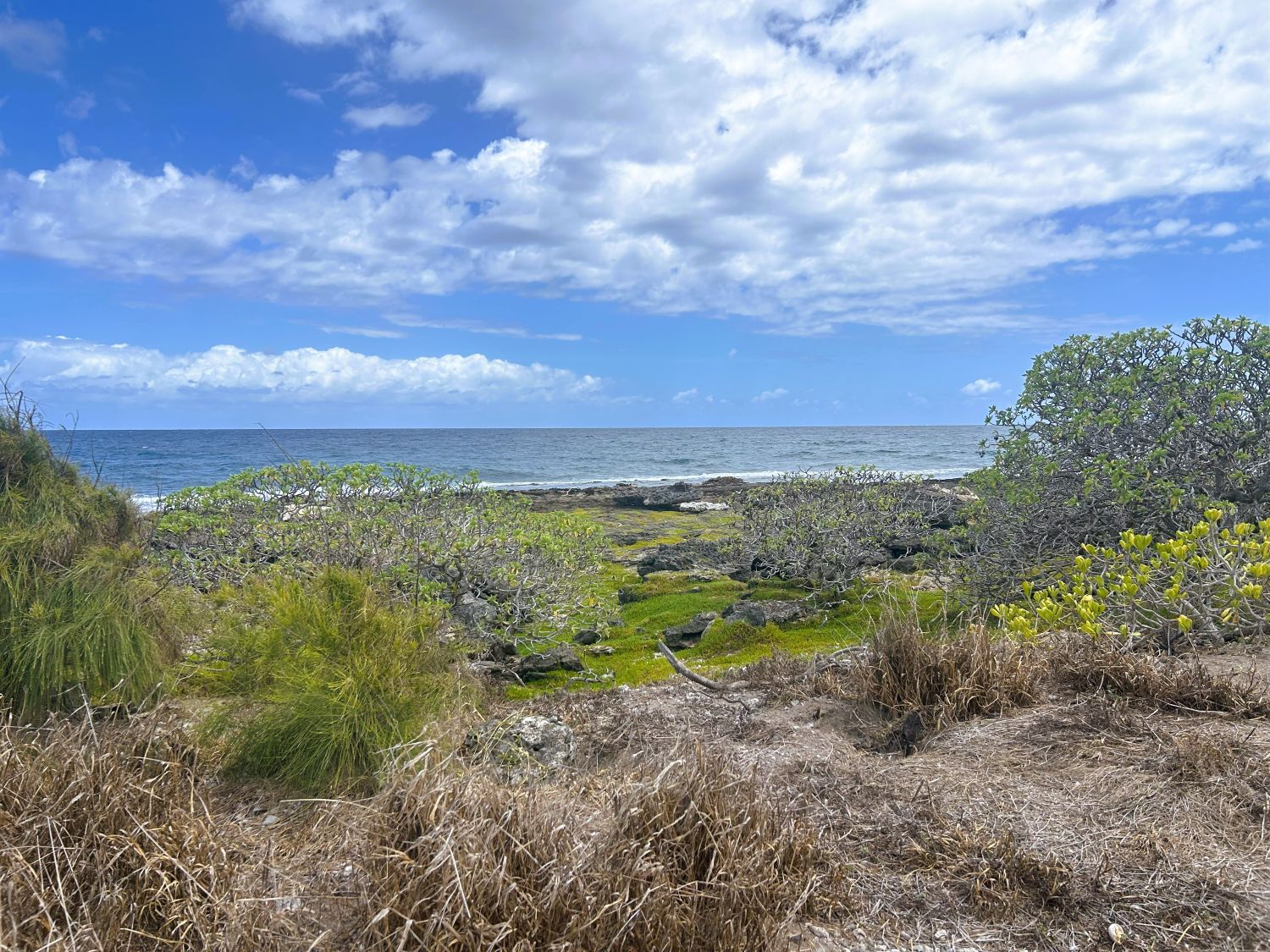
It would be tempting to look for artifacts, but there are rules, clearly stated on a prominent sign, designed to keep humans from disturbing the seabirds. Still, it’s a good place to relax and enjoy a whole different view of the windward coast.
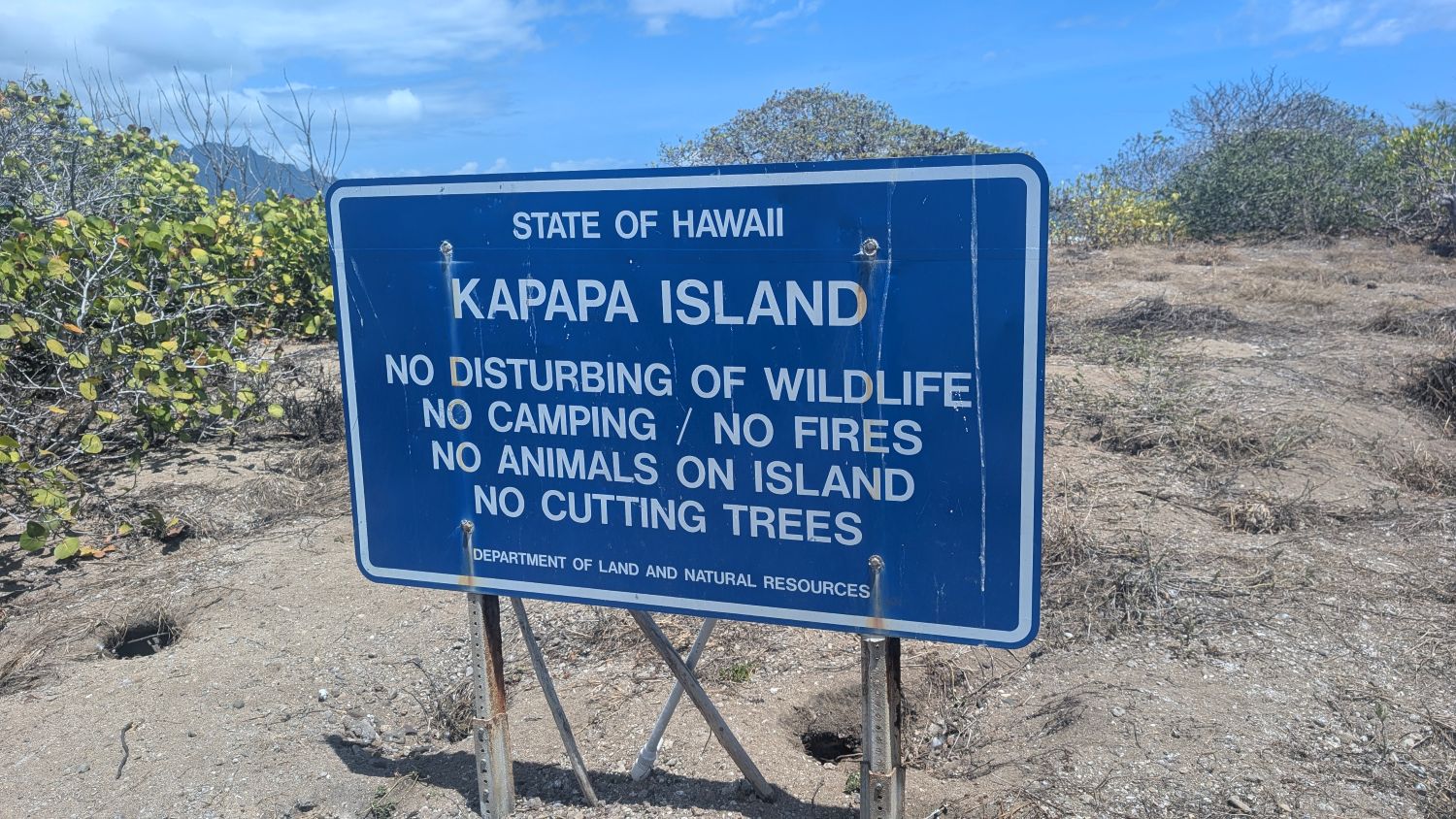
Some in our group found shade to eat lunch. Some of us walked around the perimeter a bit and some did both. I was surprised at the lack of birds, but apparently this was to be expected as it wasn’t nesting season. Sharp-eyed Marie found two shearwaters cozying up under a tree.
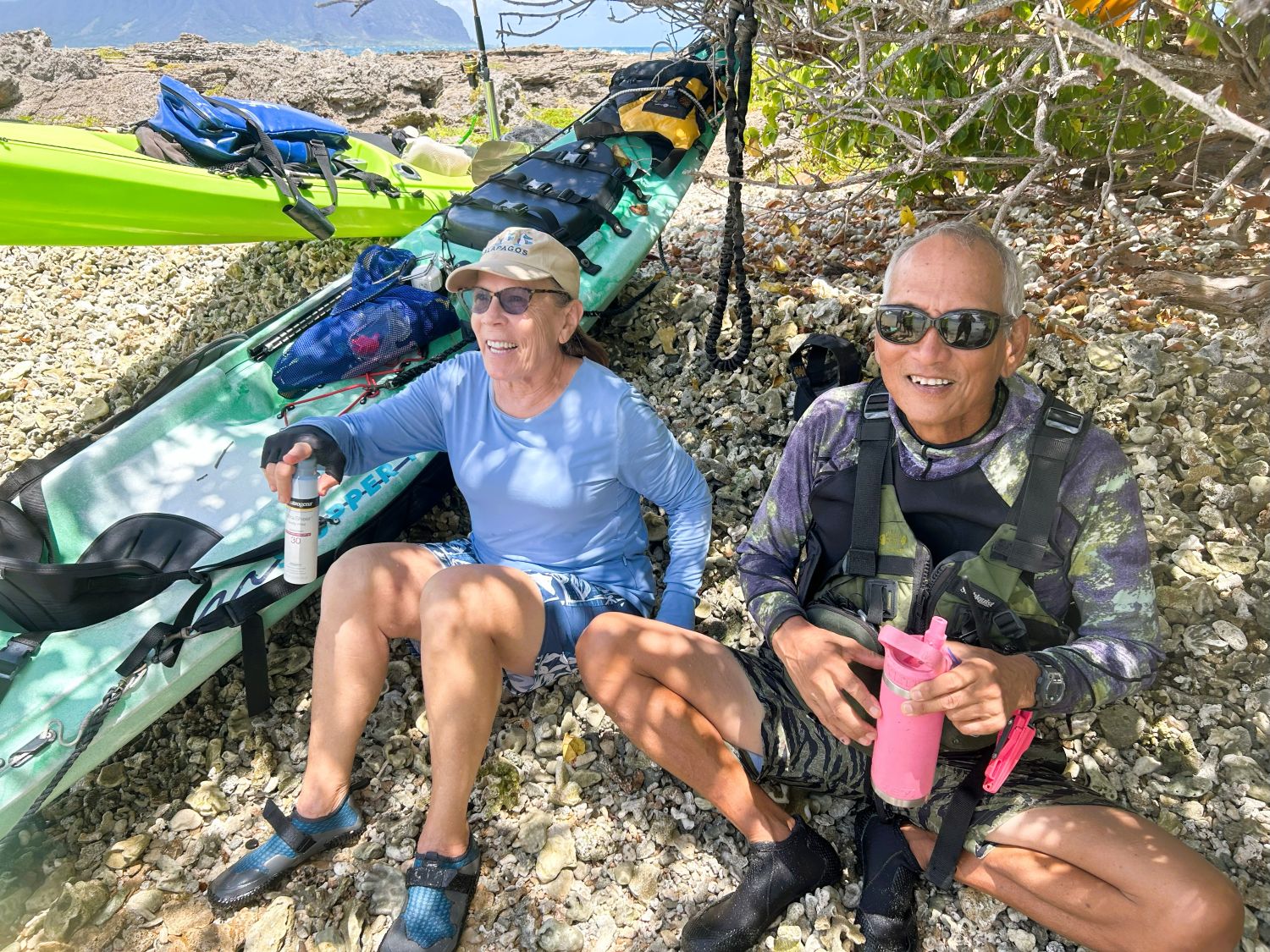
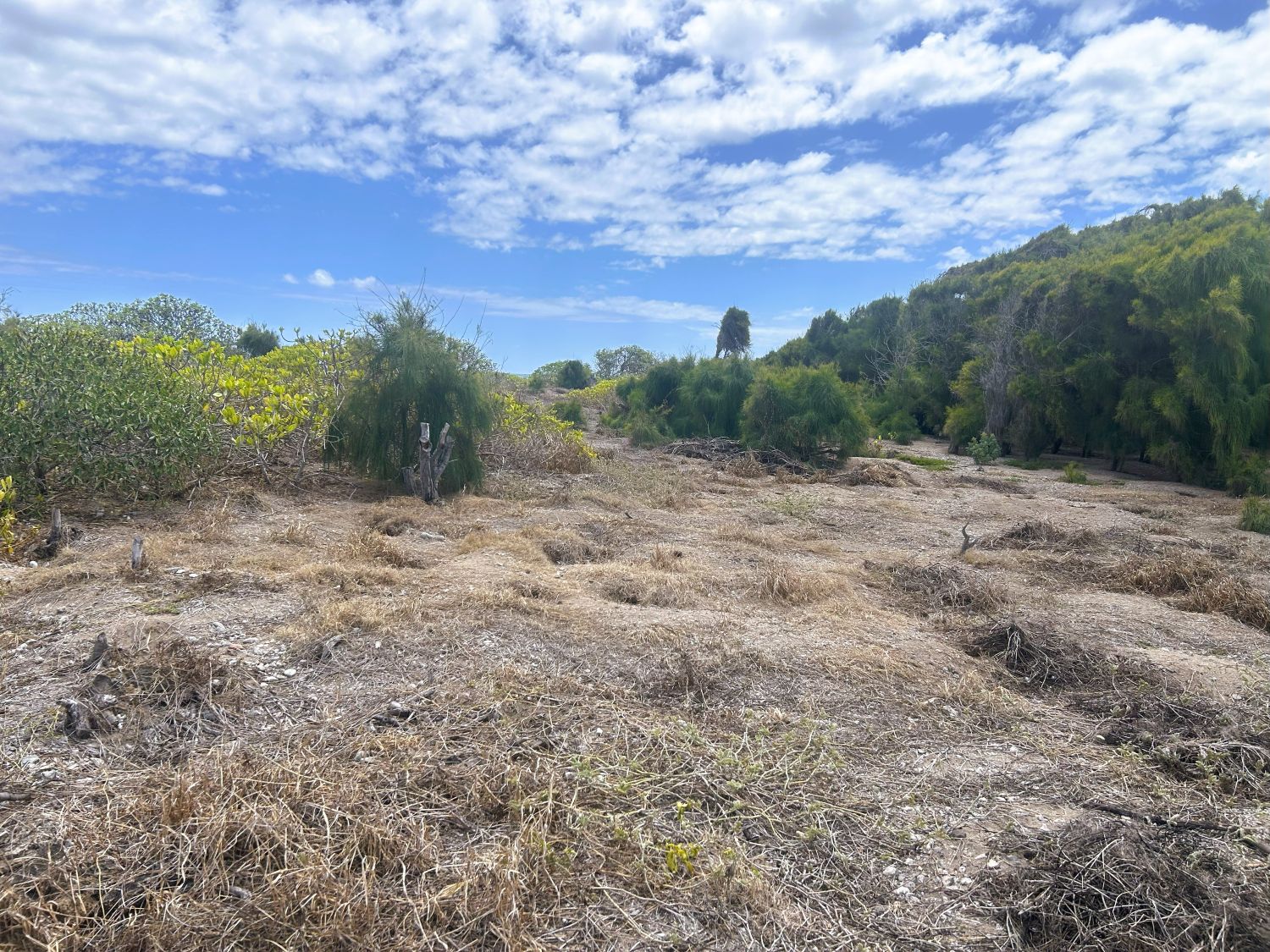
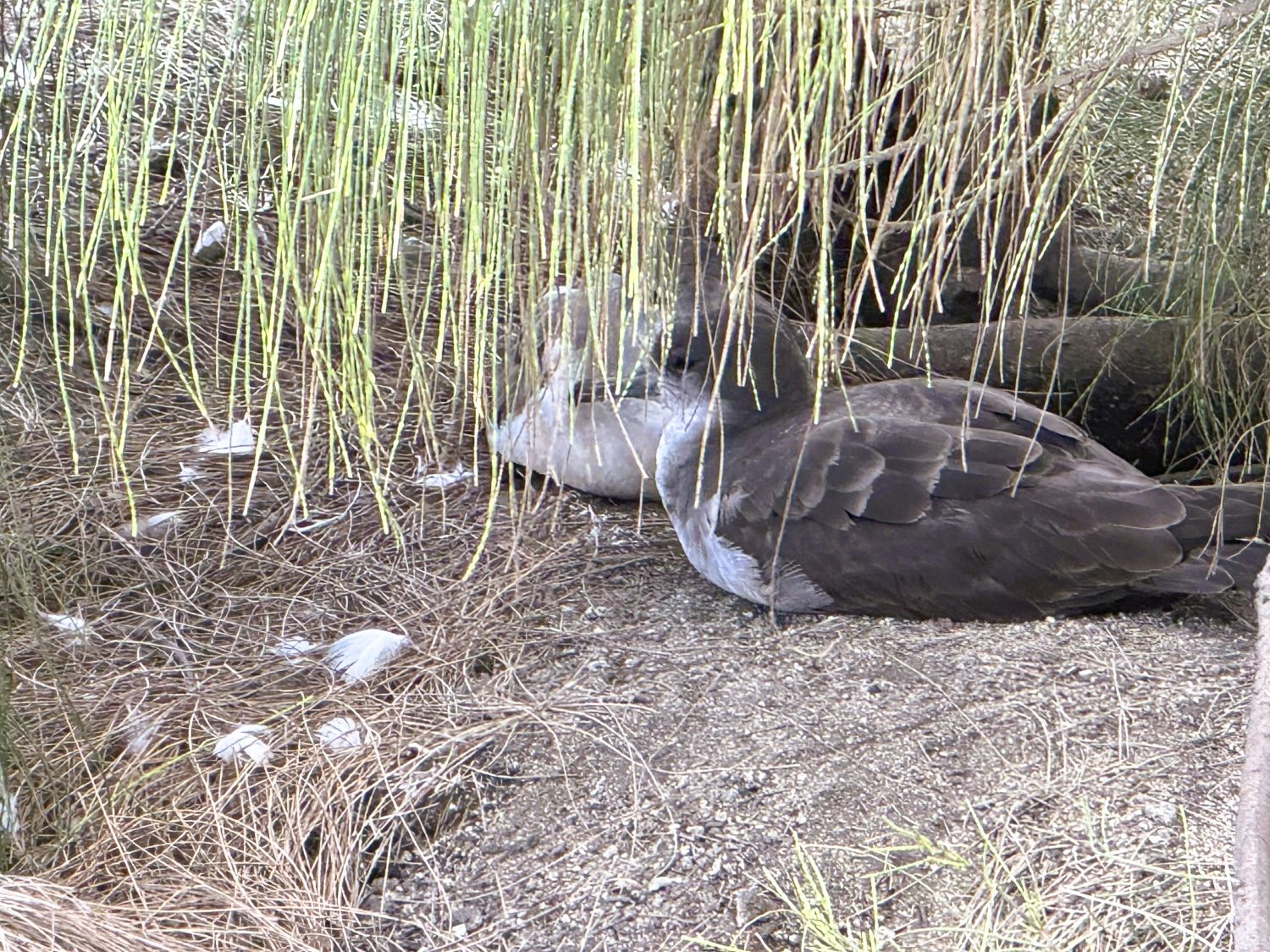
Then it was time to return. More instructions for how to get around the breaking waves (easy peasy), and then, with the wind at our backs and a couple of honu waving us through, the paddle back to Heʻeia was quick and easy.
Next island: Manana in September. I will definitely be there. Come join us!

